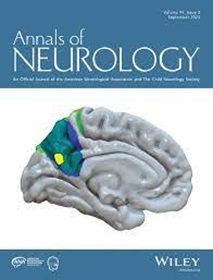Dopamine Transporter Imaging as Objective Monitoring Biomarker in Parkinson's Disease
Abstract
Objective
Although dopamine transporter (DaT) imaging is a valuable diagnostic biomarker, few studies have investigated its utility in objectively monitoring disease progression in patients with Parkinson's disease (PD). To date, no study has established a longitudinal relationship between the DaT signal decline and the motor symptom increase, potentially due to neglected factors such as brain regions, disease laterality, and symptom subtypes, which this study addresses.
Methods
This cohort study included participants who met the Movement Disorder Society (MDS) criteria for PD, with longitudinal imaging and clinical data from the Parkinson's Progression Markers Initiative Database. Linear mixed model analyses were used to investigate the relationship between the DaT signal decline and the motor symptom severity increase over time. We hypothesized that a decline in putaminal DaT availability in the less affected hemisphere would be associated with increasing contralateral motor symptoms, measured by the Unified Parkinson's Disease Rating Scale (UPDRS). Additional models explored the effects of different brain regions (caudate and putamen), symptom categories (MDS UPDRSIII score with and without tremor items), and disease onset laterality (left or right hemisphere).
Results
We included 719 participants (443 male patients and 276 female patients; mean age = 62.2 ± 9.5 years) with 1,981 available data points. As hypothesized, we observed a significant association between the decrease in the less affected putaminal DaT signal and motor symptom increase in the contralateral body side, independent of including or excluding tremor scores.
Interpretation
Our findings support the use of repetitive DaT imaging for objectively monitoring PD progression. This could facilitate personalized disease tracking, subtyping, and intervention testing in the future. ANN NEUROL 2025;98:120–135


 求助内容:
求助内容: 应助结果提醒方式:
应助结果提醒方式:


